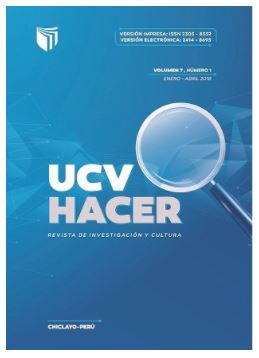Lead bioremediation using Rhizopus sp biomass
DOI:
https://doi.org/10.18050/RevUCVHACER.v9n2a6Keywords:
Biosorption, Fungus, Heavy mentals, RemovalAbstract
The various anthropogenic activities pollute environmental resources in one way or another; One of the pollutants with the greatest impact is heavy metals. Lead removal capacity was studied (II) using the fungal biomass of Rhizopus sp. Rhizopus sp was grown in potato dextrose broth medium, it was worked in a batch system where the removal tests were carried out with lead metal (II), evaluating the influence of the parameters of pH, temperature and initial concentration of metal (II). The Rhizopus sp biomass manages to efficiently remove the lead (II) metal from aqueous solutions, determining the optimal parameters for the removal of lead, values of pH 5, temperature of 25 ° C and initial metal concentration of 50 ppm with which lead is achieved (II) in 85,49%, 84,19% and 99,90% respectively. Bioremediation represents an alternative to treat wastewater with heavy metals, as it is a low-cost and renewable technology; Rhizopus sp fungal biomass represents an option for lead decontamination.
Downloads
Published
How to Cite
Issue
Section
License

This work is licensed under a Creative Commons Attribution-NonCommercial-ShareAlike 4.0 International License.










